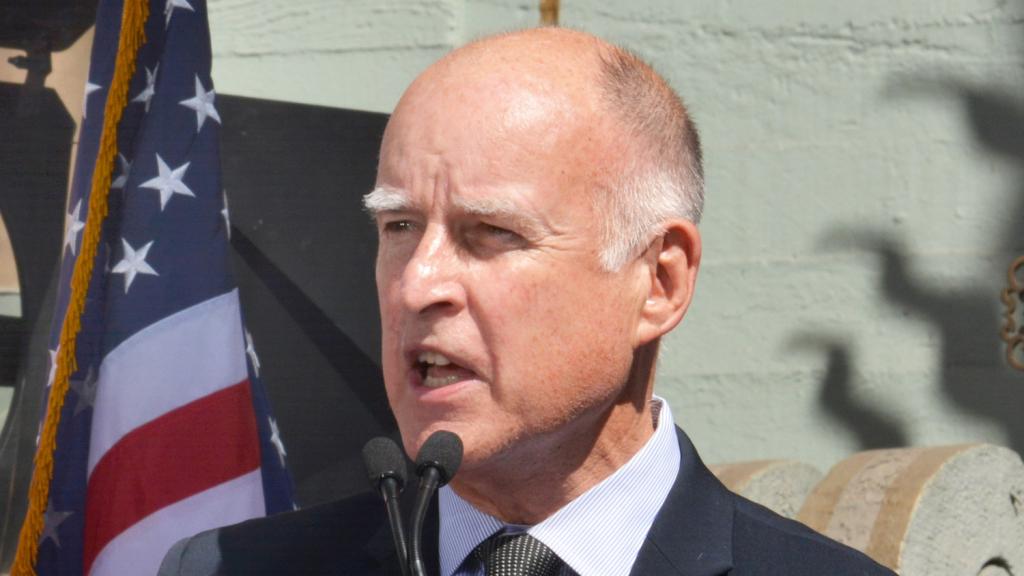Politico Magazine — which has been so good lately it makes me feel mildly guilty for making fun of Politico so much — has just published a blockbuster, 6,300-word piece from Mike Grunwald on federal credit programs.
When you hear “6,300 words on federal credit programs,” perhaps “blockbuster” does not leap to mind. But shut up. It is. This is the kind of substantive policy journalism everyone’s always hassling Politico to run, so when they run it, you should read it.
—
Federal credit programs are simply federal programs that loan money. It turns out that there are many such programs, more all the time, and they loan out lots of money — as in $3 trillion. Grunwald calls it “the bank of America.”
That bank currently has a portfolio of more than $3 trillion in loans, the bulk of them to about 8 million homeowners and 40 million students, the rest to a motley collection of farmers and fishermen, small businesses and giant exporters, clean-energy firms and fuel-efficient automakers, managed-care networks and historically black colleges, even countries like Israel and Tunisia. It has about 120 different credit programs but no consistent credit policy, requiring some borrowers to demonstrate credit-worthiness and others to demonstrate need, while giving student loans to just about anyone who wants one. It runs a dozen unconnected mortgage programs, including separate ones targeting borrowers in need, Native Americans in need, veterans in need and, yes, Native American veteran borrowers in need.
But it’s not like a normal bank.
For starters, its goal is not profit, although it is profitable on paper, and its loans are supposed to help its borrowers rather than its shareholders, better known as taxpayers. Its lending programs sprawl across 30 agencies at a dozen Cabinet departments, with no one responsible for managing its overall portfolio, evaluating its performance or worrying about its risks. The closest it gets to coordination is an overwhelmed group of four midlevel Office of Management and Budget employees known as “the credit crew.” They’re literally “non-essential” employees — they were sent home during the 2013 government shutdown — and they’re now down to three, because their leader is on loan to the Department of Housing and Urban Development. When I suggested to OMB officials that the crew seemed understaffed to oversee a credit portfolio 25 percent larger than JPMorgan Chase’s, someone pointed out that it’s hiring an intern.
And so it goes from there, digging into the mortgage loans that blew up in the housing crisis, the student loans that show every sign of blowing up soon, and the funky accounting that lets these programs appear to be making a profit when in fact the rate of default is absurdly high, and the rate of recovery after default absurdly low, in many cases.
The average default rate for private bank loans is about 3 percent; by contrast, the State Department’s “repatriation” loans to Americans who get stuck without cash abroad have a 95 percent default rate. USDA’s main mortgage program for rural families retrieves just 3 cents on the dollar from borrowers who default, suggesting it barely tries to collect when loans go bad.
Why are loan programs so popular these days? Mainly because they allow politicians to spend money without appearing to spend money. They amount to subsidies, but they don’t show up as a cost, and unless you’re a wonky journalist that goes looking, they rarely show up at all. They (like tax expenditures) are part of what Suzanne Mettler calls “the submerged state.”
Despite being part of a dysfunctional trend, however, lots of the programs are designed to do good for people in need (though most such people would be better off simply getting a cash grant). Dems are afraid that if they come in for too much scrutiny, it will just be another excuse for Republicans to cut programs for the needy. And Republicans like funneling money to their constituencies too. So no one much talks about them, while they grow and grow.
Anyway, read the story. Below I’ve extracted a few of the Gristier bits in it.
—
The big federal credit story of the last few years, of course, was Solyndra, the solar company that defaulted on a $55 million loan from the Energy Dept. and has prompted a huge wave of worry and reforms around these programs. The irony, as Grunwald documents, is that the Energy loan program, unlike most federal credit programs, was professionally run, with multiple layers of risk assessment.
In other words, [the energy loan program] was no government candy store. Every borrower had to put skin in the game, and every loan was negotiated for months. [Program director Jonathan] Silver’s team rejected applications from Range Fuels, which later failed after receiving a big USDA biorefinery loan; A123 Systems, a battery firm that would collapse despite a major grant as part of the 2009 economic stimulus package; and KiOR, another doomed biofuels venture financed by Republican Governor Haley Barbour’s administration in Mississippi. “We worked like dogs to make sure our deals didn’t blow up,” Silver says.
In fact, OMB caution caused the energy loan program to have too low a default rate — the thing was designed to help early-stage companies, but ended up having a default rate of 2 percent rather than the 10 percent it ought to have had based on its purported goals.
Post-Solyndra paranoia at OMB actually barred the program from some great loans:
… shortly after Solyndra collapsed, gun-shy OMB analysts scuttled a “Solar Strong” deal to finance 160,000 rooftop solar installations at military housing, the largest residential solar project ever. [Silver] says the analysts made the creative argument that since Congress must approve the military budget every year, they could not assume that the Pentagon would keep paying the utility bills at its housing complexes.
So OMB thinks the Pentagon is a credit risk? Someone should tell all the other federal agencies!
And it cost the program money:
In fact, if the bank of America functioned more like a traditional bank, the Tesla deal alone could have offset the losses from Solyndra. [Silver] had initially negotiated stock options for the government in that deal, but OMB was reluctant to let the department become a part-owner in a startup that it would have to oversee, so the final deal allowed Tesla to extinguish the options by paying back its loan early. “It was a disappointing decision,” Silver says. “Obviously, those options would have been worth a great deal.” At current prices, nearly $600 million.
D’oh!
And here’s one final gem. Remember how one of the reasons federal credit programs are increasingly popular is that they let politicians funnel money to favored constituencies without appearing to spend money? Check this out:
The omnibus budget Congress passed in December included a brazen new example of this funny-money phenomenon. In a classic austerity head fake, Congress cut $6.6 million in “clean coal” spending but also included language diverting up to $2 billion from USDA’s reliably profitable credit program for electric cooperatives — the one that subsidizes rural (and occasionally suburban) ratepayers — into highly speculative clean-coal projects. If the projects go bust down the road, well, the Treasury will just cover the losses.
But remember, that won’t be real money!
It’s difficult to draw any tidy conclusions from Grunwald’s piece. Some of the federal loan programs are serving the social good and ought not be treated like a private loan program; as he says, they’re designed to help borrowers, not taxpayers. Some of them are just obvious boondoggles (like the loans to rural electric cooperatives). What is clear is that there ought to be more oversight and analysis of the bank of America overall, more transparency about its parts, its goals, and its performance. Democracy is not well served by obscuring and submerging significant policies.



